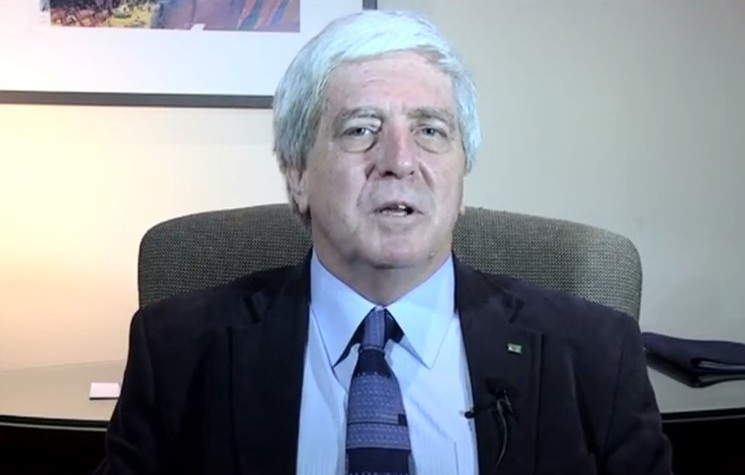Alkane Fires On Gold Revenue And Zirconia/Rare Earth Promise

By Our Man in Oz
If asked to name the best performing mining stocks since the start of the year it’s a fair bet that not many investors would nominate Australian-listed Alkane Resources. But that would be an interesting oversight, given its 64 per cent price rise over the past 30 trading days.
Several factors underpin Alkane’s impressive upward percentage move, and while one of them is the benefit of rising off a low base (A22 cents to A36 cents) that plays down the point that it had never fallen too far, and that it is much more than an explorer with a market value approaching A$150 million.
Alkane is one of a handful of Australian mining companies that has always paid its way through production, either at goldmines such as Peak Hill in western New South Wales or more recently at the Tomingley mine a little further north, with both close to the regional centre of Dubbo.
But, Alkane also has an asset which is getting more valuable by the day and while it involves a range of commodities that have recently fallen out of favour thanks to over-promotion during the resources boom, there is nonetheless growing global interest in its Dubbo zirconia, niobium and rare earths project.
Earlier this week (February 11) the Dubbo project took a crucial step towards development, with the NSW Planning and Assessment Commission (PAC) recommending approval of the mine, subject to conditions which Alkane’s chief executive Ian Chalmers says contain no areas of material concern.
More approval hurdles need to be cleared but the PAC was one of the biggest in opening the way for what will be the production of a new family of minerals in NSW.
More than a decade in the exploration, evaluation and approvals phase Dubbo is a unique project with a big price and high level of risk for any would-be developer.
The estimated $1 billion price tag is a reason for Alkane taking as much care as government agencies in making sure that the technical and financial aspects work as designed.
When built, Dubbo will be a world-class source of strategically important materials needed in a wide variety of manufacturing processes, ranging from zirconia, used in ceramics and chemicals, to niobium used to make speciality steels, to a range of rare earths which have extensive technology applications, and potentially a new product from the ore, hafnium.
The discovery that a hafnium product stream could be developed at Dubbo is new for followers of the project though it’s also one with which Minesite’s Man in Oz has a degree of familiarity.
Used in making nuclear fuel rods thanks to its ability to absorb neutrons, a fresh potential market for hafnium has been discovered — as a film on glass, reflecting radiation from the sun to become a sort of energy-free “air conditioner”.
What’s particularly interesting for Minesite’s Man Down Under is that some 20 years ago the head of the Australian Government’s mineral research facility in Western Australia was asked which mineral he saw as having the brightest commercial future. His answer was hafnium, causing a quick dash to the library (it was pre-Wikipedia days) to find out what it was.
The possible addition of hafnium to the Dubbo cocktail of products is interesting from a technical aspect and while it remains to be seen what it means commercially it could add to the interest of potential project financiers, especially government credit agencies keen to help their companies break free from the Chinese near-monopoly on strategic elements.
Western world credit agencies, along with potential off-take partners and strategic investors are likely to be the source of funding for Dubbo, with Alkane keen to keep its equity contribution to a minimum.
Chalmers, who has carefully husbanded the Dubbo project to the point where approvals are close and formal financing talks can start has also played a key role (along with his fellow directors) in creating a sustainable business structure at Alkane, one that other small miners would do well to follow.
Gold, which has always paid the bills at Alkane, remains close to the company’s treasury with Tomingley chipping in 19,175 ounces in the recently completed December quarter, generating A$23.5 million in revenue for the company with a sizeable chunk of that going towards work on Dubbo and exploration on a number of other promising discoveries.
In all, the company has three levels of activity: cash flow from Tomingley gold production; encouraging grass roots exploration success at the nearby Elsienore gold discovery; and the potential for a world-class zirconia, niobium, rare earth and hafnium development at Dubbo.
Chalmers told an interviewer last week that he was happy with Tomingley’s cash flow and expected its performance to improve as the mine moves through an area of oxidised material into fresh ore by the end of next month.
Cash flow from gold underpins Alkane and provides the funds to push ahead with the Dubbo project where the design and approvals processes continue to grind along. The target is a start on construction by the end of the calendar year.
While there is strong demand for the minerals in the Dubbo project, and marketing is not expected to present any problems, there is a process underway which first requires all government approvals before formal financing negotiations can start.
Valuing Alkane isn’t easy because it is more than a gold producer. However, two fresh reports written by analysts close to the company provide a glimpse of the future with Edison Research valuing the stock at A88 cents, and Petra Capital valuing it at an eye-catching A$2.38.
The broader market is yet to be convinced that Alkane deserves values that high, but they are numbers worth comparing with the current market price of A36 cents.
Comments (0)